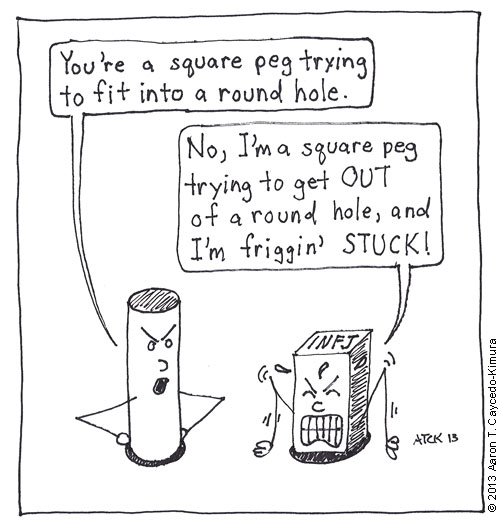Projection is ordinary. Person A projects at person B, hoping tovalidate something about person A by the response of person B. However, person B, not wanting to be an obejct of someone elses ego and guarding against existential terror constructs a personality which protects his ego and maintain a certain sense of a robust and real self that is different and separate from person A. Sadly, this robust and real self, cut off by defenses of character from the rest of the world, is quite vulnerable and fragile given that it is imaginary and propped up through external feed back. Person B is dimly aware of this and defends against it all the more, even desperately projecting his anxieties back onto person A, with the hope of shoring up his ego with salubrious validation. All of this happens without A or B acknowledging it, of course. Because to face up to it consciously is shocking, in that this is all anybody is doing or can do and it seems absurd when you realize how pathetic it is.



 Reply With Quote
Reply With Quote


 never got along with
never got along with 
